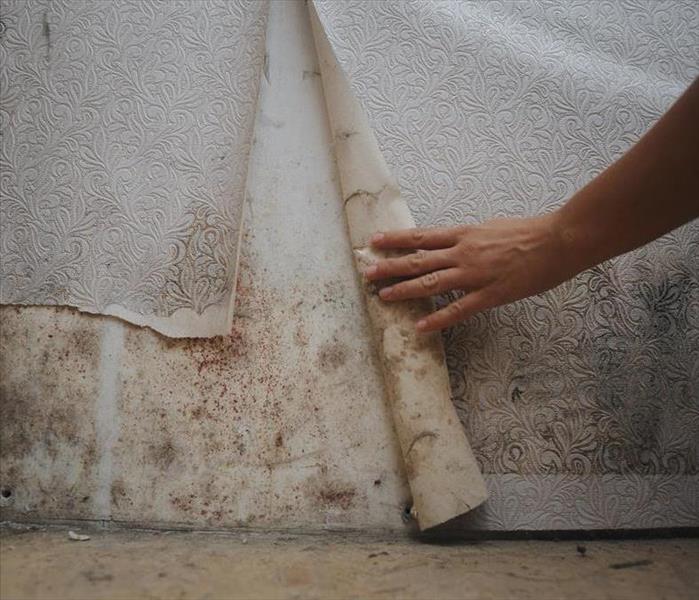Mold Concerns After a Residential Flood
2/22/2022 (Permalink)
 Bear in mind these Important Tips if you experience Mold Growth after a Residential Flood in your Kaysville, UT property.
Bear in mind these Important Tips if you experience Mold Growth after a Residential Flood in your Kaysville, UT property.
On the weather radar, when you see heavy rains approaching Kaysville, UT, you know your home could be susceptible to flooding. Several variables can cause home water intrusions, such as inadequate landscaping, a leaky roof, faulty plumbing, or foundation cracks. Water left to sit stagnant in your home can soon lead to more than simply loss from the water itself.
Secondary damage, such as mold growth, is also a significant concern. Fortunately, if you take care of the moisture problem quickly enough, you can usually avoid a mold problem.
You Can Prevent Mold Growth After a Water Intrusion
Mold can begin growing 24 to 48 hours after the spores contact moisture. Therefore, you must clean the affected area as soon as possible. Here are several steps to ensuring your house is safe from this tiny invader following a flooded floor.
1. Extract the Standing Water From the Floor
First, removing the standing water is critical to preventing mold. Typically, the simplest and quickest way of doing this is using a wet/dry vacuum. They can be rented from hardware and home improvement stores, but keeping one on hand at your home can be a great help.
2. Determine Which Contents Are Salvageable
Mold is a tiny but hardy little lifeform; it can grow on virtually any surface. Therefore, you should remove as many water-soaked materials as possible from the area. This can include flooring, drywall and wood and upholstered furniture. Many of these items will not be salvageable and should be thrown away. Whatever you are keeping must be thoroughly dried before returning to the area. If the humidity of the outdoors is lower than that of the affected area, you can allow the contents to dry in the fresh air.
3. Clean the Affected Area and Salvageable Contents
You must clean everything that comes into contact with the water thoroughly. A flood can bring in debris, bacteria and hazardous chemicals. This will also remove most of the mold spores that are there. Ideally, you can hire water damage restoration experts to bring their expertise and industrial equipment.
4. Sanitize the Affected Area and Salvageable Contents
Next, you must sanitize everything to kill the remaining harmful germs and mold spores. Sanitizing will go one step further in ensuring you avoid mold development.
5. Dry Everything Completely
Finally, the most crucial step is to ensure you dry the area thoroughly as quickly as possible. There are several approaches you can take to dry a room. You can open windows and doors to let the fresh air in. You can also run fans, heaters and dehumidifiers. If you use a dehumidifier, it's critical to remember to empty the water receptacle before it gets full, so it can continue trapping the excess moisture from the air.
Mold growth can be one of the most extreme secondary hazards that a home flood commonly produce. It can develop quickly and spread furiously throughout unaffected areas of a structure. If you discover standing water in your residence, following these five steps can help ensure that you will mitigate the loss. These steps will allow you to confidently restore your home to its pre-flood condition.





 24/7 Emergency Service
24/7 Emergency Service